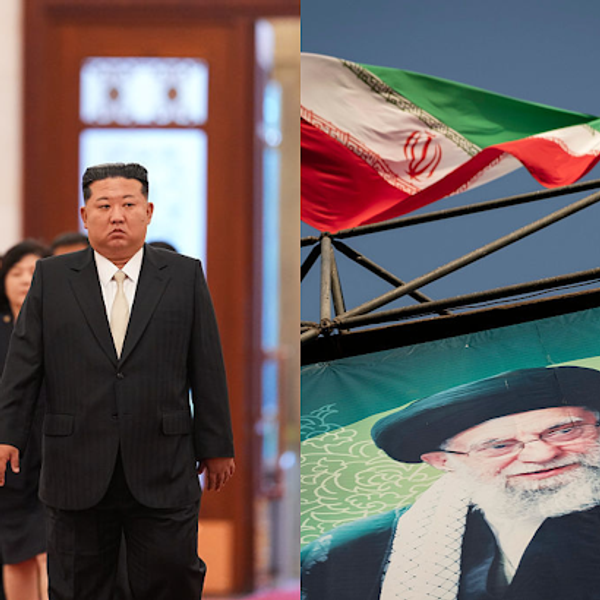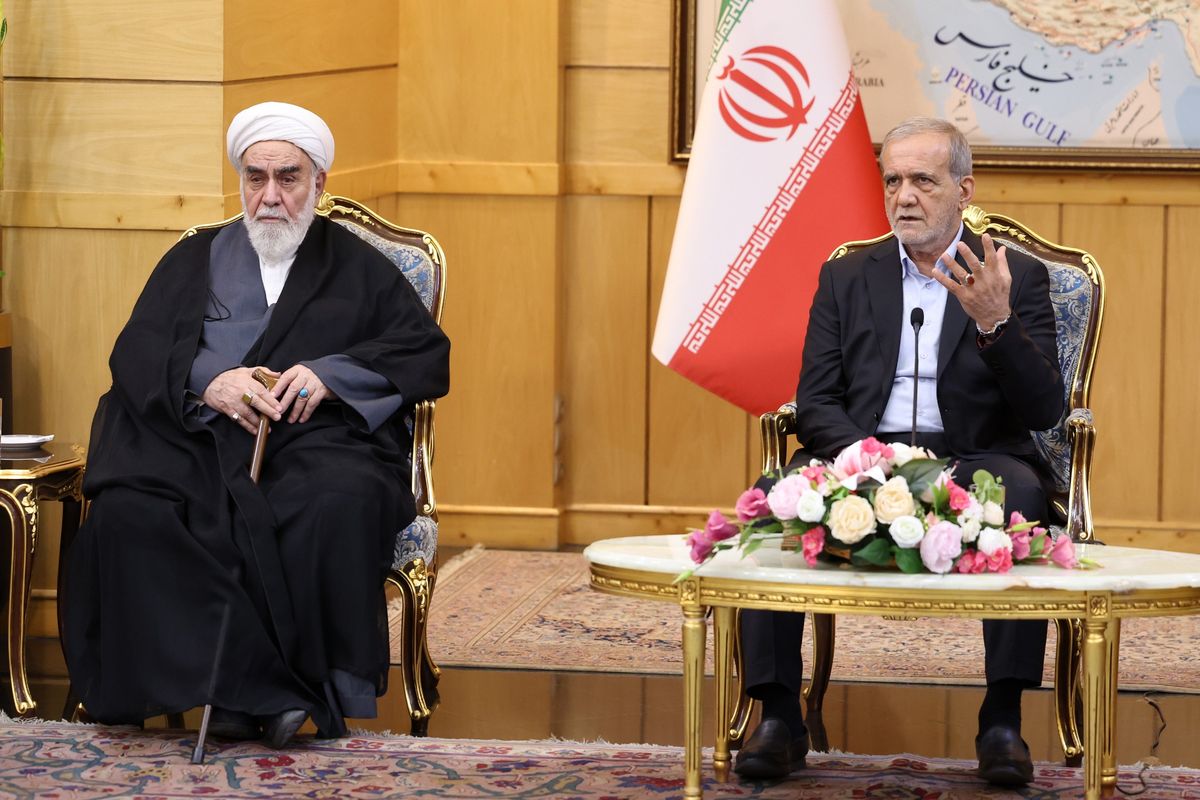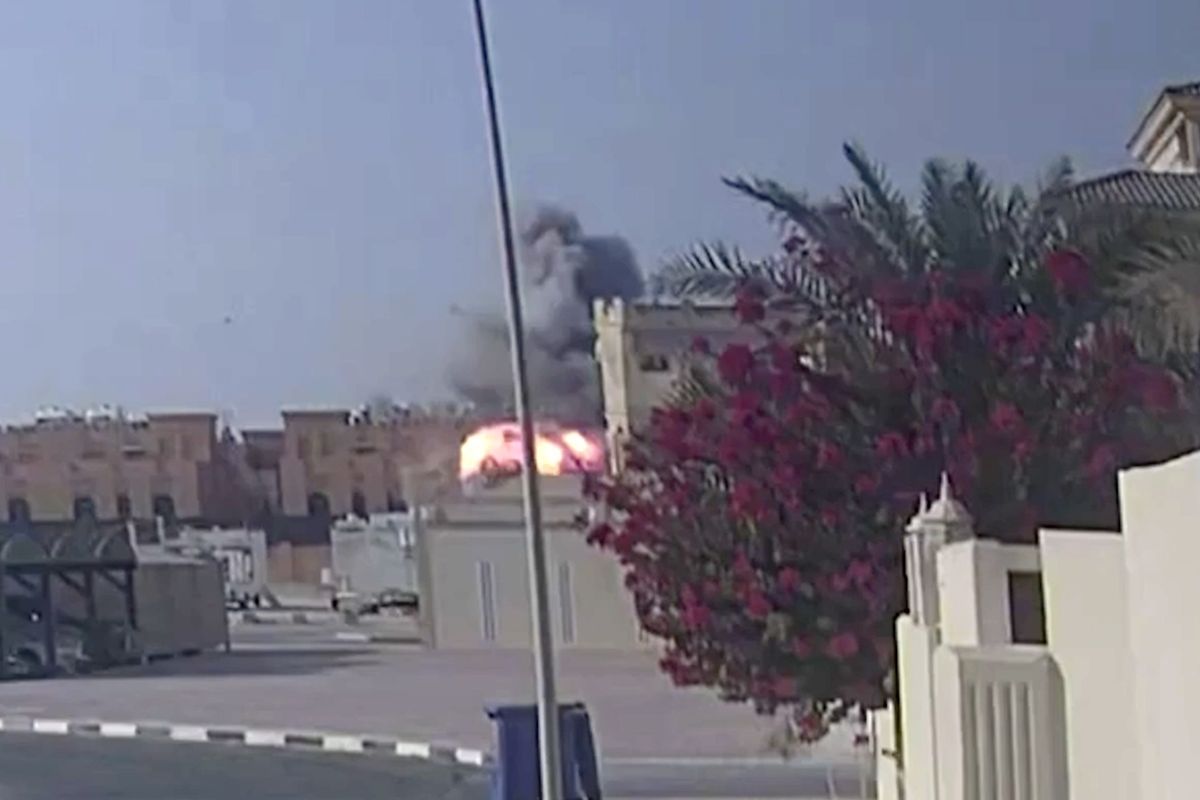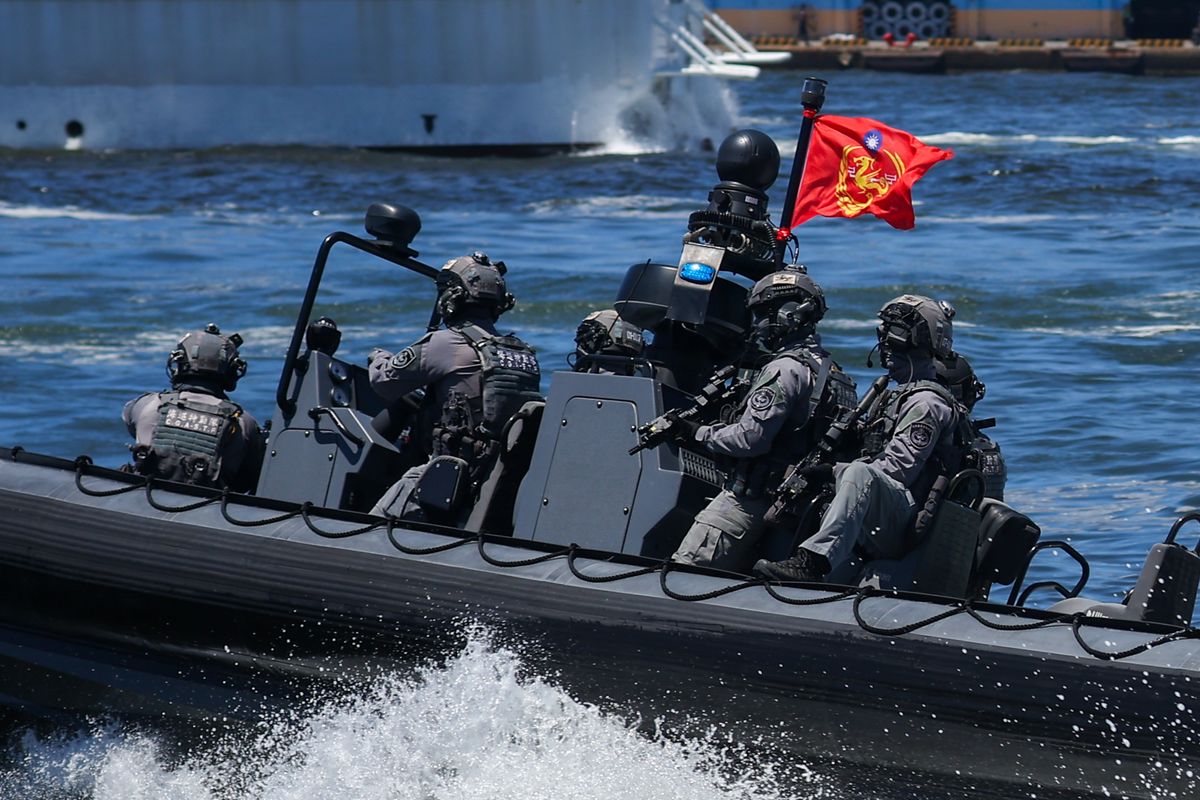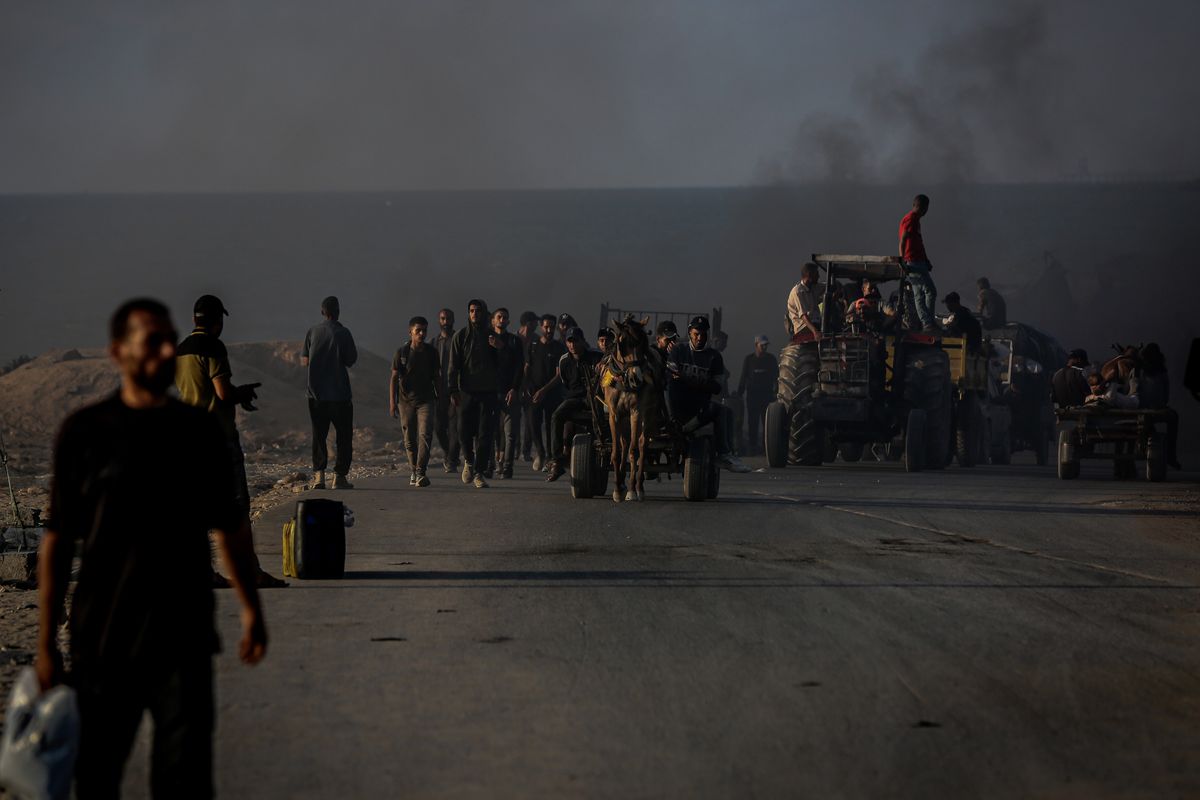OPINION – A list of proposals released last Thursday in the final report of the 12-member bipartisan Congressional Commission on the Strategic Posture of the United States, lays out a questionable buildup of the U.S. nuclear posture.
“The following strategic nuclear force posture modifications should be pursued with urgency: Prepare to upload some or all of the nation’s hedge [nuclear] warheads [now non-deployed]; Plan to deploy the [new] Sentinel ICBM in a MIRVed [multi-warhead] configuration; Increase the planned number of deployed [nuclear] Long-Range Standoff [cruise missiles]; Increase the planned number of [new] B-21 bombers and the tankers an expanded force would require; Increase the planned production of Columbia SSBNs [strategic submarines] and their Trident ballistic missile systems; Accelerate development and deployment of D5 LE2 [extended-life, sub-launched ballistic missile]; Pursue the feasibility of fielding some portion of the future ICBM force in a road mobile configuration.”
The recommendations were based on a threat assessment by the hand-picked team of Republican and Democratic members of Congress based on what the U.S. may be facing in just a few years — two nuclear peer adversaries, Russia and China.
The Commission said it was responding to a worst-case situation, saying in its report, “nuclear force structure constructs can no longer assume that the nuclear forces necessary to deter or counter the Russian nuclear threat will be sufficient to deter or counter the Chinese nuclear threat simultaneously. Nuclear force sizing and composition must account for the possibility of combined aggression from Russia and China. Therefore, the United States needs a nuclear posture capable of simultaneously deterring both.”
There was little public notice of the Congressional Commission’s proposals given Hamas’ terrorist attack on Israelis and Israel’s continuing response, the fighting in Ukraine and the internal GOP battle over House Speaker.
However, the report’s recommendations will be taken seriously on Capitol Hill as reflected in this response from Rep. Mike Rogers (R-Ala.), Chairman of the House Armed Services Committee, who said, “The details of this report should serve as a wakeup call for our strategic posture – we need to rapidly make changes now if we want to deter tomorrow.”
I agree with the views expressed by writers for the Federation of American Scientists (FAS) who said, “The Commission’s embrace of a U.S. nuclear buildup ignores the consequences of a likely arms race with Russia and China.” The FAS group recognized that the proposed U.S. nuclear buildup response to China would cause Russia to increase its own deployed warheads and delivery systems and perhaps cause China to rethink it needs even more.
But beyond the threat of causing a new arms race, the Congressional Commission’s report resurrects a series of Cold War rationales for added nuclear weapons that I believe are no longer valid.
It's not just for the President anymore. Are you getting your daily national security briefing? Subscriber+Members have exclusive access to the Open Source Collection Daily Brief, keeping you up to date on global events impacting national security. It pays to be a Subscriber+Member.
For example, the Commission declares that the first “foundational strategy tenet is…maintaining an assured second-strike capability sufficient to impose unacceptable costs as an adversary or adversaries perceive it under any conditions.”
Here, the Commission raises the old Cold War ‘first strike’ threat that was a reason for building up U.S. nuclear forces back in the late 1950s-early 1960s. However, who today believes that either Russia or China – or both together – would ever attempt to carry out the so-called first strike, to knock out the entire U.S. nuclear force?
That is why beginning in the late 1960s, we established the diversified Triad – using strategic bombers, ground-based intercontinental ballistic missiles (ICBMs) and strategic sub-launched ballistic missiles (SLBMs) to survive and thus deter any first strike.
A first strike carried out against the deployed U.S nuclear Triad that exists today would require the most precise attack in human history and the resultant radioactive fallout – 400 of U.S. ICBMs are in underground silos — would threaten the survival of much of mankind.
Also, remember that today, a U.S. strategic Ohio-class submarine carries 20 SLBMs with three or four warheads on a missile, each warhead many times more powerful than the bomb used at Hiroshima. Normally, four of 15 U.S. strategic subs are on operational patrol, which means they are all but impossible to be targeted. That also means there could be a minimum of 240 U.S. nuclear warheads that, without the proposed Commission buildup, could today and in the future, survive any Russia/China hypothetical first strike attempt.
In addition, employing the retaliation for a first strike theory puts the emphasis on survival of systems and therefore requires more weapons and delivery systems if a retaliatory strike is to be effective.
Another fallacy in the Commission’s deterrent rationale is that holding at risk key elements of Russian and Chinese leadership would “Continue the practice and policy of not directly targeting civilian populations and adhere to the LOAC [Law of Armed Conflict] in nuclear planning and operations.”
In Cold War days, and I believe today, saying you are targeting “key elements of their [Russia, China] leadership [and] the security structure maintaining the leadership in power,” means hitting Moscow, Beijing and perhaps other cities, each with more than one thermonuclear warhead. That would result in the killing and wounding millions of civilians, so don’t talk about adhering to LOAC when you are contemplating nuclear attacks on “key leadership” of Russia and/or China.
As with Hiroshima and Nagasaki, although they each had minor military targets, the real aim of using the first atomic bombs was to use them as terror weapons to kill people and end a war, not to continue fighting that war.
There is an interesting, relevant story behind the 1960s end of the Eisenhower Administration’s strategy to deter first use of nuclear weapons by the Soviet Union. It was called “massive retaliation” and claimed that the U.S. would use almost all its nuclear weapons as a response to destroy the Soviet leadership and its urban/industrial base. It was also called city busting.
Robert McNamara, who served as Defense Secretary during the Kennedy Administration, rejected the Eisenhower Administration’s strategy of attacking cities and instead wanted to destroy Soviet nuclear weaponry, which required many more nuclear weapons and more accurate delivery systems.
As described in the 2010 book Stockpile by retired Vice Adm. Jerry Miller, who in the early 1960s worked at Strategic Command on joint strategic target planning, “when he [McNamara] took office in 1961, the weapons in the nation’s nuclear war plan numbered around 3,500. When he left office seven years later, the figure was about 7,000 and climbing to 10,000.”
Before President George H.W. Bush’s administration ordered reductions and arms control negotiations, there were some 50 nuclear weapons pointed at Moscow — and my guess is that there are still at least 10 or more U.S. warheads targeting the Russian capital today.
The Commission also recommended an increase in lower-yield tactical or battlefield weapons in order to - as its report says - “Provide the President a range of militarily effective nuclear response options to deter or counter Chinese or Russian limited nuclear use in theater.” It specifically calls for “additional U.S. theater nuclear capabilities” in Europe and the Indo-Pacific areas.
Subscriber+Members have a higher level of access to Cipher Brief Expert Perspectives and get exclusive access to The Dead Drop, the best national security gossip publication, if we do say so ourselves. Find out what you’re missing. Upgrade your access to Subscriber+ now.
Today, Russia has some 2,000 tactical nuclear weapons while the U.S. maintains less than half that number in tactical nuclear bombs and air-launched and sub-launched missiles.
The Commission said, “Russia is projected to continue to expand and enhance its nuclear forces, with most of the growth concentrated in theater nuclear forces, thus increasing its decided numerical advantage over U.S. and allied nuclear forces.”
In addition, the Commission claimed, “Russian strategy and doctrine as written, envisions limited first use of theater nuclear weapons to, inter alia, coerce war termination on terms acceptable to Russia,” which is also referred to as the “escalate to de-escalate policy.” Russian officials, however, continue to insist that Moscow would only order first use of any nuclear weapon if existence of the state were under threat.
However, the Commission recommends a policy that sounds very much like Russia’s so-called ‘escalate to de-escalate’ policy.
The Commission said, “The objectives of U.S. strategy must include effective deterrence and defeat of simultaneous Russian and Chinese aggression in Europe and Asia using conventional forces. If the United States and its Allies and partners do not field sufficient conventional forces to achieve this objective, U.S. strategy would need to be altered to increase reliance on nuclear weapons to deter or counter opportunistic or collaborative aggression in the other theater.”
That’s a great example of the declaratory policy of “calculated ambiguity,” which the Commission approves. As its predecessor Congressional Commission on the Strategic Posture of the United States put it back 2009, “Calculated ambiguity creates uncertainty in the mind of a potential aggressor about just how the U.S. might respond to an act of aggression, and this ought to reinforce restraint and caution on the part of that potential aggressor.”
As I’ve indicated, when it comes to nuclear weapons, people have played word games with nuclear strategy and have felt strong or weak politically at home and diplomatically abroad, based on the number of nuclear weapons possessed.
The most important fact about nuclear weapons remains — they have not been used in wartime since 1945, and despite their now-growing focus, hopefully, they will not ever be used again.
The Cipher Brief is committed to publishing a range of perspectives on national security issues submitted by deeply experienced national security professionals.
Opinions expressed are those of the author and do not represent the views or opinions of The Cipher Brief.
Have a perspective to share based on your experience in the national security field? Send it to Editor@thecipherbrief.com for publication consideration.
Read more expert-driven national security insights, perspective and analysis in The Cipher Brief




